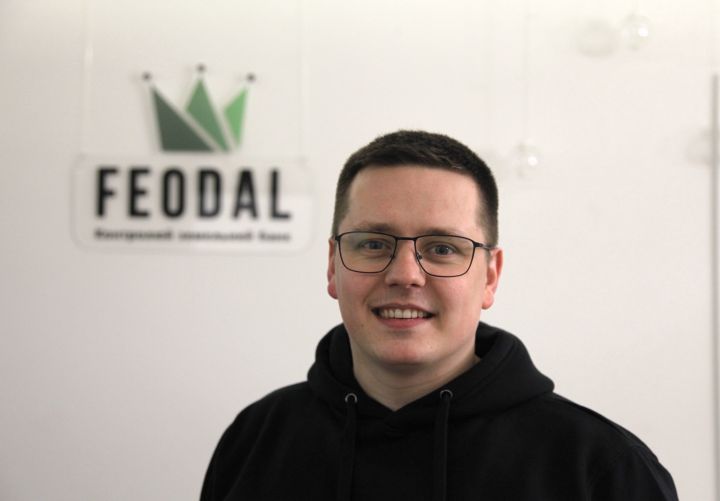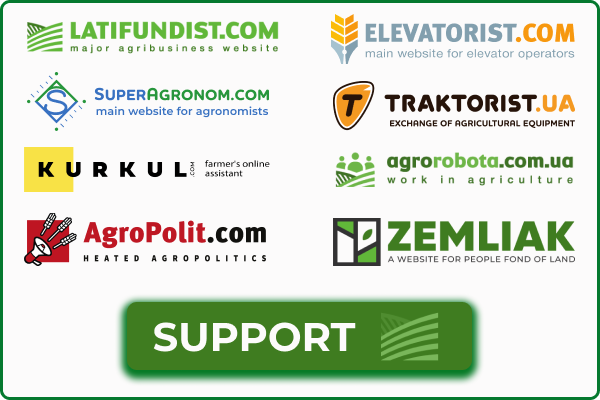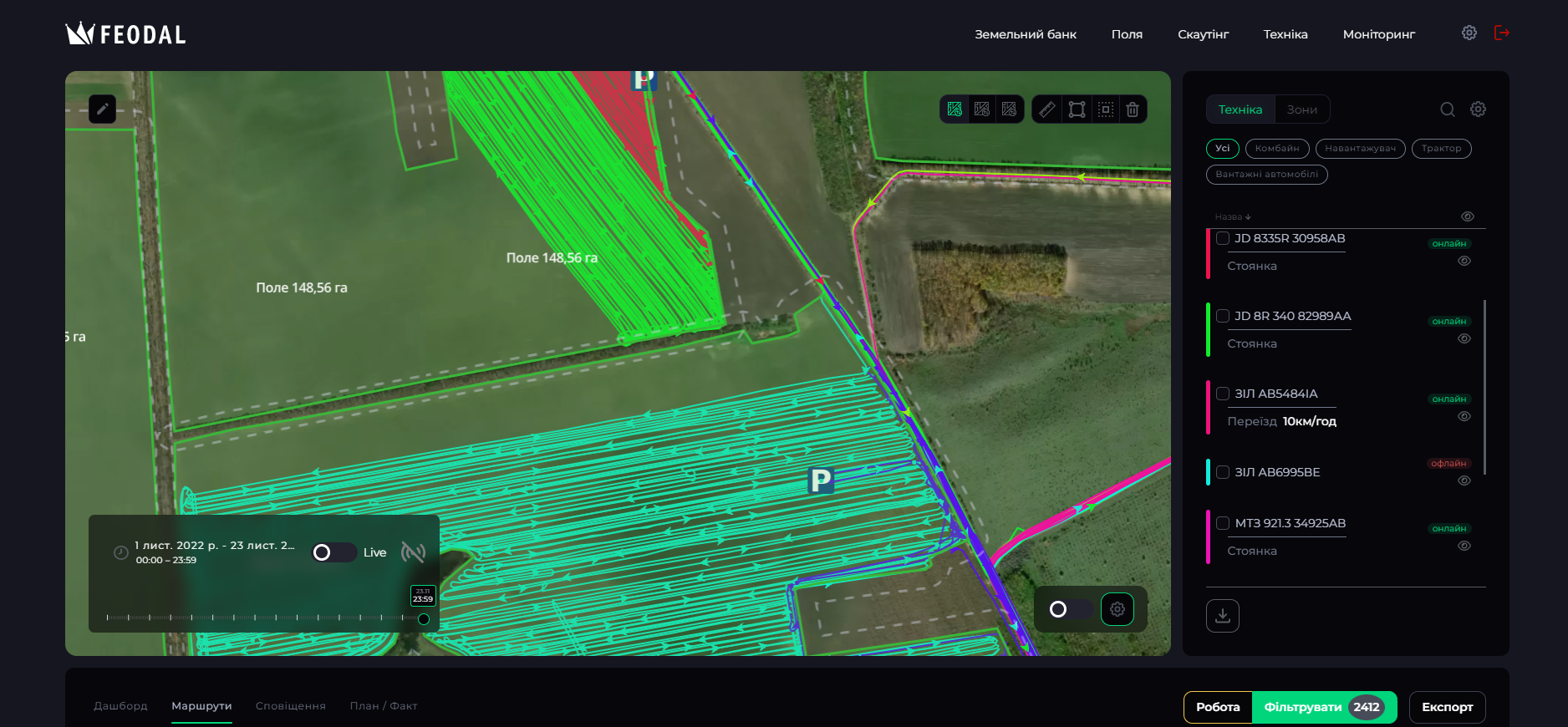Agribusiness in Three Clicks: How Andrii Demianovych Decided to Launch Feodal FMS During the War
The Feodal Company launched an online land bank management service three years ago. Not only farmers but also territorial communities, notaries and creditors of agribusiness became the users. Today, the Feodal team is re-entering the market with a new development — Farm Management System Feodal FMS.
How is it to enter a highly competitive market during the war? Let us speak with the founder and head of the company Andrii Demianovych.
Latifundist.com: Where did the idea to create your own FMS come from?
Andrii Demianovych: This is an evolutionary story. As you remember, for the last three years, we have helped manage the land bank. However, over time, we noticed they had issues, and we realized there was a request from agrarians to manage the entire enterprise. In response to this request, Feodal FMS was developed.
Latifundist.com: What options does it offer?
Andrii Demianovych: This is satellite and weather monitoring, online control of the equipment work and the quality of operations, and planning of agricultural operations. That is, it is possible to control work processes, for example, how sowing or harvesting goes on, with the help of GPS sensors and satellite images.
Latifundist.com: This is the standard functionality of such systems. You are entering a highly competitive market. How will you take it, what is the feature of your system?
Andrii Demianovych: As in the case of cars or mobile phones, there are also many FMS on the market. However, everything settles the ease of use and the emotion that the customer gets from using the product.
Since the very beginning of the company's work, we have introduced the three-click rule: the user's path from the request to receiving the result should be three clicks. We are trying to implement this rule in the FMS system.
Latifundist.com: Won't the simplicity of the system put off users?
Andrii Demianovych: In order to make it easy to use the functionality, we went through a difficult development process. Therefore, in 90% of requests, the user receives a result in exactly three clicks. How is it possible? Due to the automation of the maximum amount of processes. We invest a lot of money in developing automated system solutions, teach it to think and see obvious things, and not force the user to enter short-term data on their own.
Latifundist.com: Explain how it works with an example.
Andrii Demianovych: For example, why manually enter data into the system about where a specific tractor will go today if the system actually sees it due to GPS navigation data? After all, agronomists at the enterprise will in any case send the tractor to work on certain fields, and forcing a logistician or agronomist to enter short-term planning data manually is absurd.
We exclude this absurdity. Our FMS system is fully automated in this direction — from tractor locations and the creation of work in the field to closing operations, counting write-off volumes, and so on.
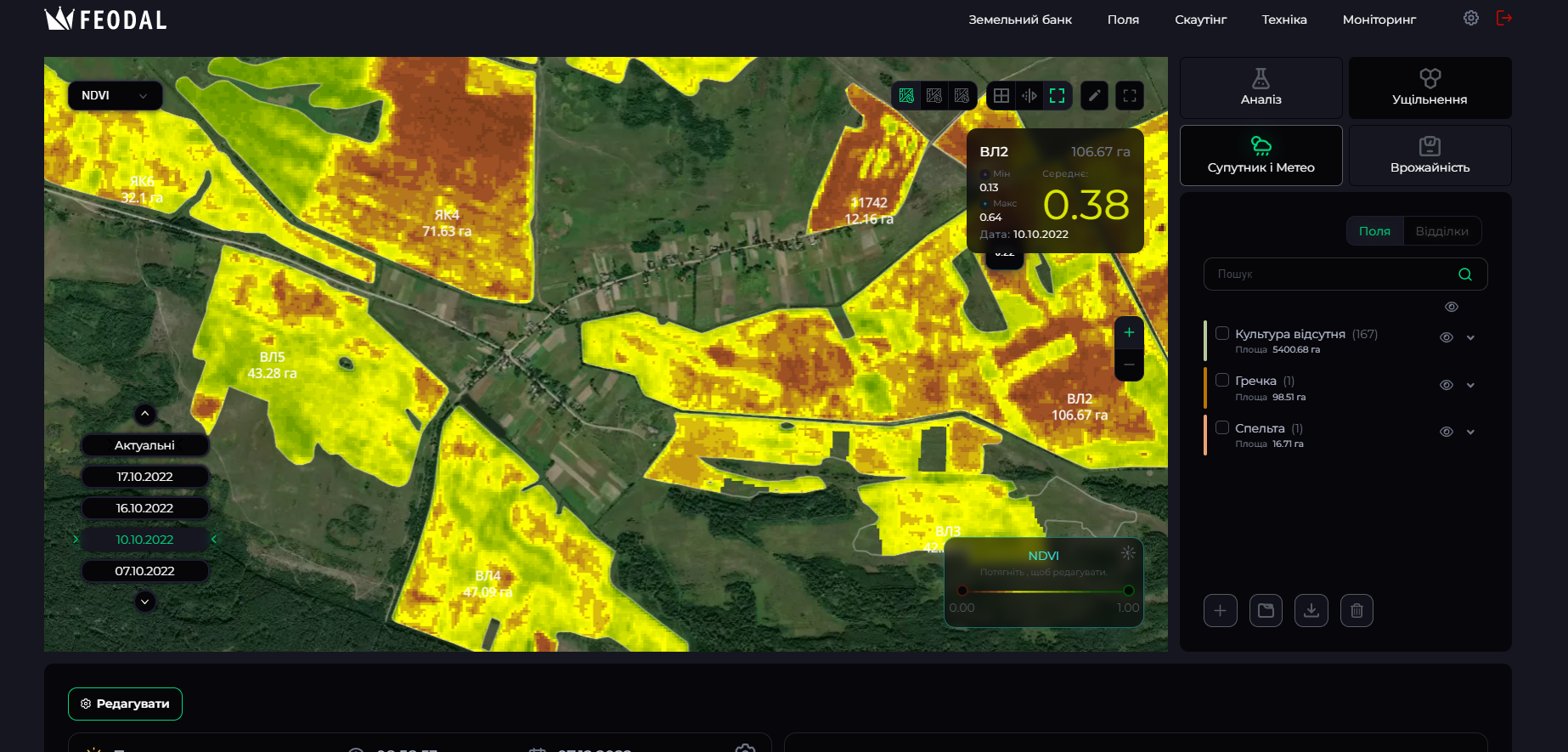
Latifundist.com: Does this mean that the system is less functional than other similar systems?
Andrii Demianovych: No, absolutely not. We strive to protect the client from endless tables with endless columns and rows. Instead, we give him a specific visualization with highlighted information that the manager needs during decision-making. And if necessary, he can export all information in the form of tables with columns in a few clicks, if necessary, for example, for accounting. Our goal is to provide the required information as simply as possible in a minimum of clicks.
Latifundist.com: It reminds us how Jobs forced his developers to do any function on the iPod in three clicks.
Andrii Demianovych: Yes, it is. We came up with the idea of how to manage operational processes similar to a strategy game. In addition, we often received customer requests about whether it is possible to combine everything in one system and manage the entire enterprise online, not just the land bank. Then the idea was born — to simplify and automate not only the work with the land bank but also all agricultural operational processes.
Latifundist.com: Are both Feodal services, such as Land and FMS related?
Andrii Demianovych: Yes, they are in the same system, just in different menu items. One menu item is "land bank", the second one is "fields", then — equipment, etc. This system is based on the constructor principle. For example, we have an integration with John Deere. As a client of this company, you can receive data online in Feodal FMS. Agrarian has the ability to integrate data from one system into another.
Latifundist.com: Are your first customers the farmers who are working with Feodal Online?
Andrii Demianovych: Yes, it is. Because a request for such a system came from them. However, we look wider and are open to the whole market.

Latifundist.com: Many holdings are already working with existing FMS on the market. Whom are you targeting?
Andrii Demianovych: First of all, on average farmers. When I studied this market, I saw that many farmers perceive FMS as something expensive, complicated and something that works in large agricultural holdings. So, I wanted to break this perception and create the most simple and automated system.
Because many farmers, when they look at the existing FMS, think that they need two more people to "sit on them". However, this is absurd. If you set it up properly once (we will help you to do it), then it can be done by an ordinary accountant or logistician.
FMS should relieve the headache. Therefore, I want to inspire those who think it is difficult and are afraid to come to it. In addition, to show that it is not that expensive.
Latifundist.com: Let us talk about "expensiveness". You enter the market during the war when, to put it mildly, the farmer has no extra money. Don't you see the risk here?
Andrii Demianovych: Yes, the war showed that only the efficient and those who know every bit of their field survive. Starting from unjustified land cultivation, which you risked when you entered the neighbour's field, technical losses, when you cultivated the rented land not enough and ending the analysis of crops. Or adding chemicals that cost a lot of money.
Here is an example for you. The farmer is preparing to apply a herbicide with the active substance Desmedipham, but he did not measure the pH. Moreover, there is a herbicide that, at a pH of 8 or more, has a half-life of 12 minutes. So, you've already mixed it, but haven't started the tractor yet, and your herbicide is already half-disintegrated. Just because he did not measure the pH of the water.
And we strive to solve the problem of this pain, to give the farmer the tools for effective work — correct application of preparations, control of water pH, application temperature, speed of harvesting. The farmer realizes that his funds are invested in each of these stages of work. And this is the development of the enterprise, a new tractor, a harrow or new technologies.
Latifundist.com: How much does your subscription cost?
Andrii Demianovych: Given the ongoing war, we strive to support farmers and give them opportunities for growth and development. The subscription fee is 60 cents per hectare for the first year of using the system. For this cost, the farmer gets access to the system and unlimited communication time with our specialists, professional assistance and support.
Latifundist.com: Ok, the money is sorted out. Let us go through the math part. What are the two main options of Feodal FMS you would highlight?
Andrii Demianovych: First of all, it is satellite analytics and weather control. These are the easiest entry points to enterprise management analytics because they do not require additional capital investments and lengthy training processes. Everything you need is only understanding and normal functional display of data. In this block, we provide a set of indices for analytics, including the number of NDMI, NDVI, EVI2, MSAVI, terrain and, of course, satellite imagery.
Each index is good, but separately it does not allow us to see the situation without leaving the office. But the combination of different indices and necessary terrain gives a clear picture. In our system, the terrain is a radar survey of the earth's surface, which makes it possible to assess the actual relief of the territory.
Latifundist.com: Why is this so important?
Andrii Demianovych: For instance, if a farmer aims to analyze the condition of the field at a specific problem point, the result does not necessarily depend on the condition of the soil or the poor work of the operator. This may be the result of the terrain — elementary water erosion, and as a result, it washes away preparations and fertilizers. And, having terrain data, the farmer will see it, analyze and understand the cause-and-effect relationships and make the necessary decision.
For instance, he will give less nitrogen in this part of the field because it will still be washed away. Understanding the field’s topography is the first step to further differentiated application and precision farming.

Latifundist.com: Where do you get the satellite data?
Andrii Demianovych: Our supplier is the GeoPard service (a German AgTech company that signed a cooperation agreement with Kernel in 2020 – ed.). GeoPard provides analytics that describes a field’s historical and seasonal crop growth patterns, helping you better understand your field and make the right decisions in the right areas at the right time.
Latifundist.com: What about weather data?
Andrii Demianovych: On the convenient dashboard, the user selects the desired widgets and receives the necessary information. It allows the farmer to analyze the weather and make decisions about applying fertilizers and pesticides. It also gives the farmer the ability to check whether under the appropriate weather conditions his employees made those applications, or simply wasted the money because it was +28 ℃ and the instruments simply did not work. And such an elementary understanding of the weather already allows you to manage the enterprise more efficiently and save money. I want to add that the system will also notify the user about peak or stressful air temperatures.
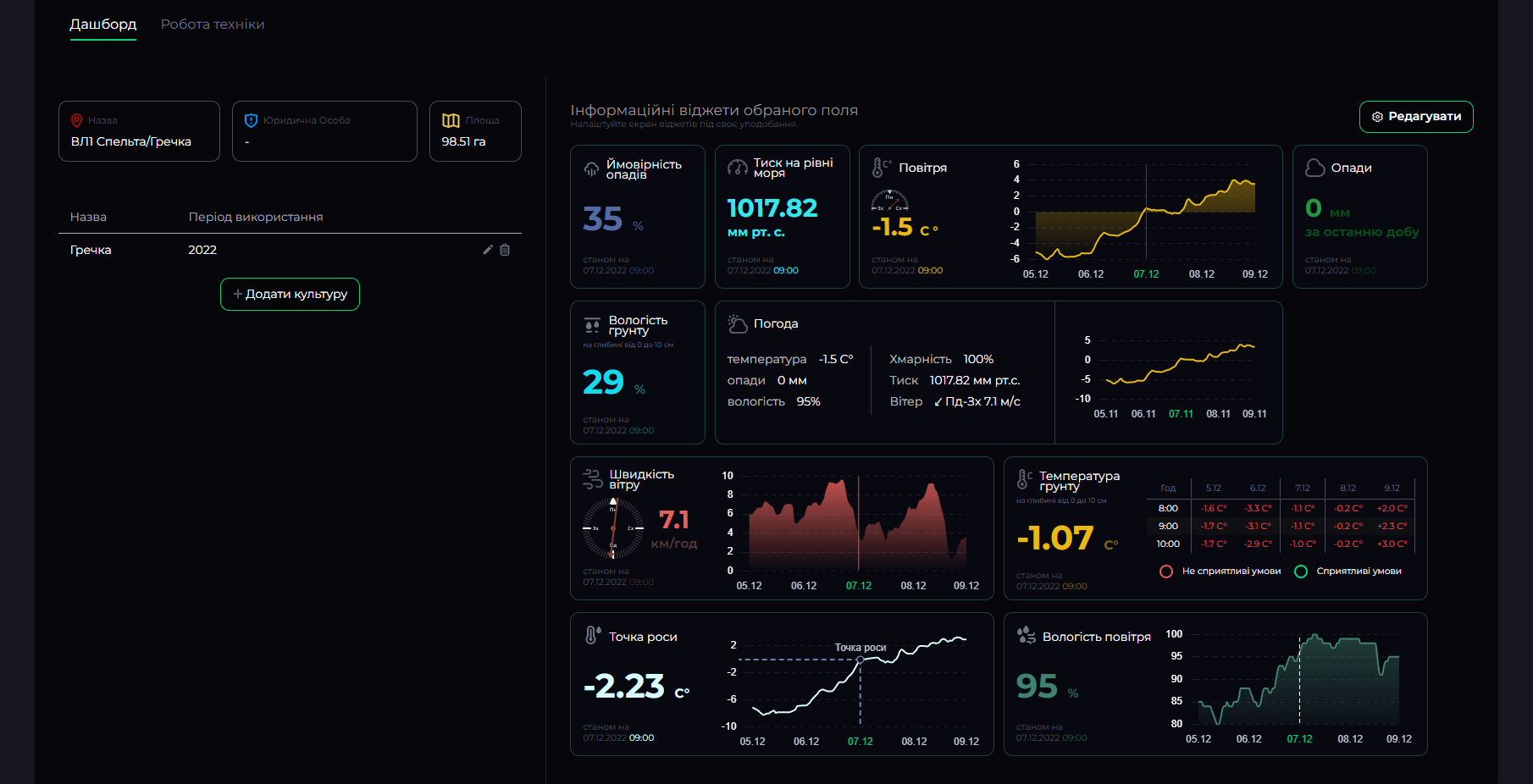
Latifundist.com: And for the final — equipment monitoring. I recollect that Ukrlandfarming was the first in telematics.
Andrii Demianovych: The architect of this system works in our company (smiles – ed.). This block primarily shows the presence of equipment in the system and its participation in work processes. We are not fans of short-term planning, so, we have completely automated this process. The system creates a buffer area around the fields; we add them to the system. And as the machinery moves through these areas and the field, the system understands what process is taking place — whether it's just driving, harvesting, or parking.
It is possible to obtain information on aggregates and drivers both from identification sensors (tags, driver cards) and entering information by the dispatcher based on the formed works in the field thanks to the algorithm.
Latifundist.com: What about speed?
Andrii Demianovych: Your question is offensive (smiles – ed.). The system collects and processes data on the speed of movement of equipment, and its activity in the field. Analyzing this data, the client can see whether the tractor operator is "speeding" his tractor, whether the hired machinery is in no hurry to harvest, and is simply wasting your money on the field.
Understanding this analysis and controlling the process allows the user to simply set the monitoring vector and control the entire operation of the enterprise.
Latifundist.com: The system is already in its final form. Do you have any options in your plans?
Andrii Demianovych: The system is in the mode of the first version. In the near future, we will release additional blocks and features that will be updated to users regardless of the subscription date.
For consultation on the implementation of the system, contact tel. 0671020106, or follow the link https://feodal.online/fms/
Kostiantyn Tkachenko, Latifundist.com

